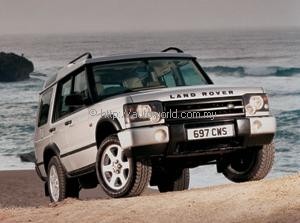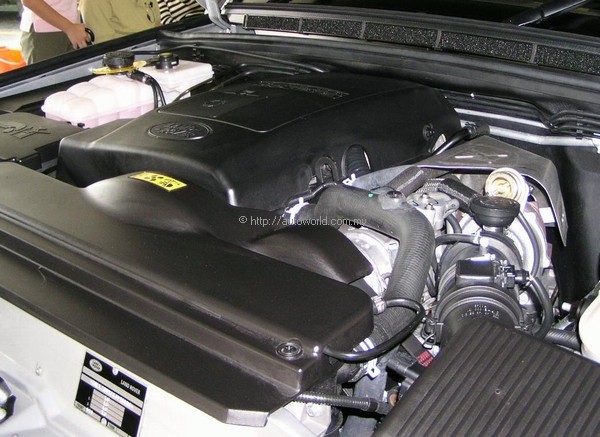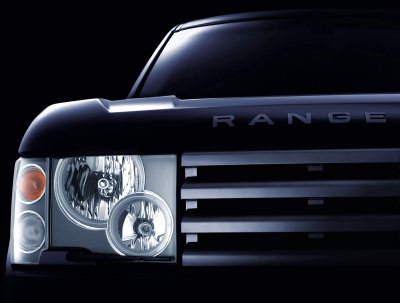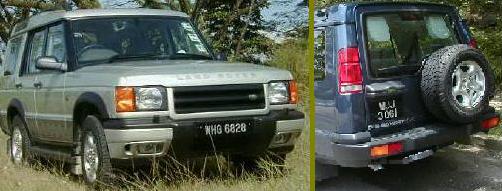2003 Land Rover Discovery
There’s a saying: “If it ain’t broke, don’t fix it”; translated, it means that if something is going well, don’t do anything to it to spoil things. Perhaps that sort of philosophy applied decades ago when the business world was less competitive and change could be slower. However, in today’s fast-paced world where consumer trends need to be responded to quickly, a product that is ‘good’ will not remain on the top of people’s shopping lists if it does not undergo change.
This is evident in the Land Rover Discovery which has been around for 13 years and, this year, goes into a third generation. Though the Discovery (or ‘Disco’) has always been a sturdy and well accepted product and could well have continued without a new generation so soon, the realities of today’s competitive market have made it necessary to offer refreshment periodically.
So Land Rover, which is now part of Ford’s Premier Automotive Group, spent around RM144 million to develop the third generation. The ‘modest’ budget (a brand new model would cost a billion ringgit at the very least) meant that an evolutionary approach was taken and much of the money was thus spent on refinements, enhancements and quality improvements, rather than to come up with a radical new design.
 |
A quick glance may suggest that nothing has changed but that’s only because the looks are unchanged, a deliberate move because the Discovery styling is something which is still much admired – yet not copied. The stepped roof, in particular, is a sort of Land Rover ‘trademark’ now and can be seen in the Discovery as well as the Freelander.
But look more closely and the frontal presentation is new. The headlight units are twin pocket headlamps with twin interlocking dip and main beam projectors behind a clear lens. The new headlamp assembly is accompanied by smaller indicator and parking lights on the outside edge of the unit. Although they provide a strong Land Rover ‘family’ link between Discovery and Range Rover, their adoption is practical as well as cosmetic with the new lamps providing far better performance in terms of the spread and range of the beam and fairly even illumination.
The new black three bar grille retains the simplicity of the previous version but has been extended to the edge of the headlamps to reinforce the strong vertical and horizontal elements integral to Land Rover’s design philosophy.
Beneath the grille lies an all-new, three piece bumper assembly, which has a revised profile to improve the Discovery’s off-road agility. The end caps are easily replaceable in the event of minor damage and also house the new Range Rover-style fog lamps: by mounting the fog lamps higher than before, they are less prone to off-road damage.
Visual changes to the rear are less extensive, restricted to the revised tail-lights. The direction indicators have been enlarged and have been moved from their previous position within the rear bumper assembly to the main light cluster housing in the rear pillars flanking the tailgate. This move enhances visibility of the turn signal for following drivers. The reversing lights are now housed in the rear bumper display alongside the high intensity rear fog lamps.
The cosmetic alterations on the exterior (no dimensional changes) are among the many changes that the 2003 Discovery has. The changes have been aimed at offering improvements to the vehicle‘s on-road driveability, refinement, quality, reliability and off-road ability.
Like the new Range Rover, the latest Discovery is designed to be equally at home cruising on the North-South Highway as it is in the rough terrain of Taman Negara. Enhancements to the chassis are said to have improved the on-road ride and handling and attention to refinement has produced a vehicle that’s quieter than before.
Changes to the transfer box, including new mesh patterns on the gears, extra ribbing on the case itself and revised mounting points, have been made to lower NVH (noise, vibration and harshness) intrusion while extensive use of new damping panels has been made to prevent body generated boom.
A comprehensive overhaul of all seal fits has been made to reduce wind noise and water ingress while changes in production techniques and tolerances has further improved panel fit. Other NVH issues have been addressed by changes to the air induction system. A second resonator has been added to the system to quieten induction roar.
The Discovery’s proven attributes are unchanged, ie permanent 4×4 with High and Low ratios for superior capability and a battery of pioneering electronic control systems including Electronic Traction Control and Hill Descent Control.
The latest Discovery continues to be available with Land Rover’s pioneering Active Cornering Enhancement (ACE), which electronically reduces body roll on the road but also improves wheel articulation off-road. The system is operated by quick-reacting hydraulic actuators powered by a high pressure pump. The actuators automatically stiffen the suspension guided by an electronic control unit taking information from vehicle-mounted sensors. The result is a reduction in body roll in cornering, giving extra driver confidence and passenger comfort.
ACE functions off-road too. The control unit can detect off-road driving patterns and adjusts the suspension to allow greater articulation giving extra agility. On side slopes, the ACE system will lock the suspension for improved confidence. This innovative and intelligent system demonstrates Land Rover’s no-compromise approach giving agile on-road handling without compromising off-road performance.
A 4-channel ABS is standard and incorporates Electronic Brakeforce Distribution (EBD) that adjusts the braking to suit the vehicle load condition for optimised braking. For 2003, the four disc brakes have new pads and the hydraulic system features a revised master cylinder with revised stroke. Coupled with changes to the brake caliper piston and modifications to the ABS control programme, the new brake system is said to have improved sensitivity, pedal travel and feel.
No mention is made of changes to the engines and while a petrol V8 is available, it is the excellent Td5 five-cylinder turbodiesel engine which is in the Discoverys assembled in Malaysia. This 2.5 litre, 5-cylinder engine was originally developed and is manufactured by Land Rover. It uses Electronic Unit Injector (EUI) technology where each injector is separately controlled by an electronic control unit. The system injects the fuel at extremely high pressures for maximum control, the result being responsive, clean and economical performance across a wide range of power and torque.
The Td5 engine produces 101 kW (137 ps) at 4200 rpm and tuning has taken maximum torque up to 340 Nm) when coupled to an automatic gearbox. Maximum torque is delivered at just 1950 rpm, providing great flexibility in all kinds of driving situations.
Among the special features of the Td5 is its 2-stage throttle response, made possible by the unit’s electronically controlled, ‘drive-by-wire’ system. This system has two throttle maps – an on-road version providing fast response for maximum driveability while the off-road profile is more linear.
A key factor in the development of the Td5 engine was to reduce cost of ownership. For example, the lubrication system features a centrifugal oil filter in addition to the normal filter. This traps particles that might otherwise contaminate engine oil and pushes oil change points to 20,000 kms. This reduced use of oil reduces servicing costs and has significant environmental benefits.
The Malaysian-assembled TD5 is offered only with a 4-speed automatic transmission with dual mode operation. This electronically-controlled unit features a high-speed digital link with the engine management system to ensure gearchanges are swift and precise. The dual mode function provides for a Sport mode in high range that alters throttle response for a more reactive feel. In low range, a Manual mode is available, allowing a selected gear to be held without shifting, allowing the driver greater control to negotiate a wide range of off-road conditions.
The first Discovery in 1989 introduced a benchmark in interior design, thanks in no small way to the extensive involvement in many off-road activities where a lot of feedback was obtained. Apart from being exceptionally spacious, the cabin also had many clever ideas and Conran (a noted interior design company in Britain) added smartness to the appointments.
 |
For the second generation, Conran was not used as Land Rover and the Rover Group had gained more in-house resources by then. However, the cabin design was not changed radically either as it was still much-praised.
For the third generation, it is still untouched but there are new trim colours and some trim variations evident. It retains the versatile layout which can accommodate up to seven people on three rows of ‘stadium-style seats’ (rising towards the rear).
Reflecting its practical nature, the 2003 Discovery has plenty of space for oddments with a large centre console box, glove box, door bins and roof mounted stowage nets. The rear load space area has retaining rings to assist in anchoring luggage and loose items.
The new Discovery retains the famous ‘curry hook’ – a handy catch on the passenger side of the centre console where a typical take-away (tar-pau to Malaysians) can be carried without fear of the contents being spilled over the interior. This useful little feature was a personal inclusion by the project engineer of the Discovery who had a fondness for buying take-away meals from England’s Indian restaurants and was fed up of the boxes sliding around on the floor and sometimes splitting open – with messy results!
The 2003 Discovery will be officially launched at the Bangsar Shopping Centre in Kuala Lumpur at 6:30 pm on April 18 and Land Rover Malaysia (LRM) says that the public is invited. The price is in the region of RM235,000, about RM15,000 more than the previous generation which had its price unchanged from the time it was launched in Malaysia in 1999. It is assembled at Swedish Motor Assemblies in Shah Alam, Selangor, where Volvos are also assembled.
 |
| Some of the changes in the 2003 Discovery |







































